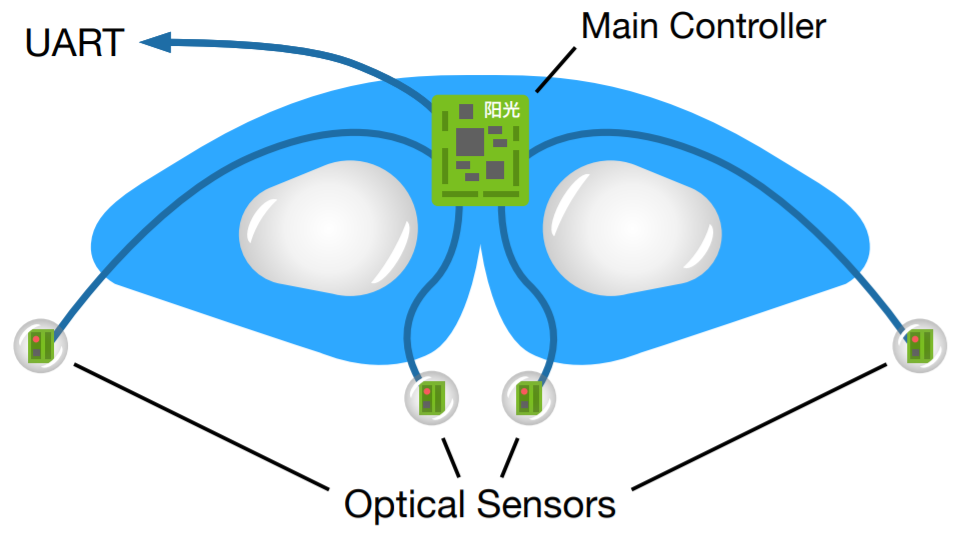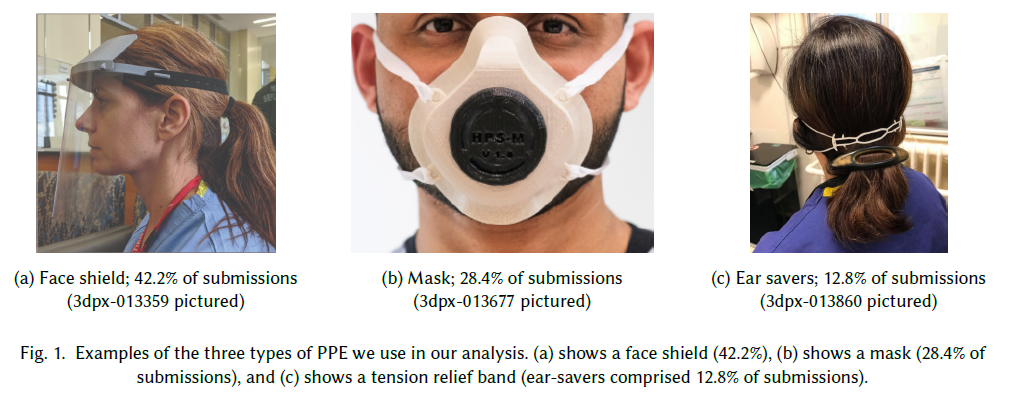Research
Software alone can only do so much—I believe combining software with digital fabrication’s potential to rapidly produce customizable tools will allow us to solve many more of the problems within our society. This is why I seek to combine digital fabrication with sensing to create interactive physical interfaces, aid in personal health monitoring, and/or design tools to allow people to better observe the physical world around us.
As an undergraduate, I have conducted research in three main areas: sensing, digital fabrication, and synthetic biology.
Sensing
Multi-Channel Facial Photoplethysmography (PPG)
 Description: The face provides a very unique opportunity for performing physiological sensing using wearables and camera-based systems. Measuring the vascular network in the face may enable disease diagnosis and continuous monitoring. A powerful and widely used technique for cardiovasular sensing is photoplethysmography (PPG), a non-invasive optical measurement of blood pulses. However, facial PPG remains under-explored in terms of both signal acquisition and analysis. To characterize the timing and morphological features of facial PPG waveforms we designed, built, and tested a multi-channel facial PPG sensing system that can record synchronized pulse waveforms at multiple locations and optical wavelengths. We worked closely with a clinical collaborator from University of Washington Medicine to prepare this system for intraoperative use.
Description: The face provides a very unique opportunity for performing physiological sensing using wearables and camera-based systems. Measuring the vascular network in the face may enable disease diagnosis and continuous monitoring. A powerful and widely used technique for cardiovasular sensing is photoplethysmography (PPG), a non-invasive optical measurement of blood pulses. However, facial PPG remains under-explored in terms of both signal acquisition and analysis. To characterize the timing and morphological features of facial PPG waveforms we designed, built, and tested a multi-channel facial PPG sensing system that can record synchronized pulse waveforms at multiple locations and optical wavelengths. We worked closely with a clinical collaborator from University of Washington Medicine to prepare this system for intraoperative use.
Individual contributions: (1) helped design breakouts for our optical sensors, (2) set-up optical sensors to get a photoplethysmography (PPG) waveform to use to calculate pulse transit time, (2) developed firmware on an MSP430 to control sampling across devices/sensors
Wearable Sensing for Postural Orthostatic Tachycardia Syndrome
 Description: Postural Orthostatic Tachycardia Syndrome (POTS) is blood circulation disorder that affects over 500,000 Americans, but there is still much that is unknown about the condition, its causes, and symptom triggers. Physiological indicators of POTS include racing heart rate (tachycardia) and low blood pressure, which often present as a variety of symptoms including syncope, dizziness, and nausea in people with POTS. We aim to create a wearable device in a compressive sleeve/sock formfactor that can monitor these symptoms and potentially warn the user before the onset of adverse symptoms by leveraging a metric called pulse transit time (PTT). PTT is the time it takes for a pulse wave to travel through a certain length of the artery and is correlated with blood pressure and other cardiovascular parameters, allowing us to use it as a proxy to continuously and nonvasively monitor a person cardiovascular state.
Description: Postural Orthostatic Tachycardia Syndrome (POTS) is blood circulation disorder that affects over 500,000 Americans, but there is still much that is unknown about the condition, its causes, and symptom triggers. Physiological indicators of POTS include racing heart rate (tachycardia) and low blood pressure, which often present as a variety of symptoms including syncope, dizziness, and nausea in people with POTS. We aim to create a wearable device in a compressive sleeve/sock formfactor that can monitor these symptoms and potentially warn the user before the onset of adverse symptoms by leveraging a metric called pulse transit time (PTT). PTT is the time it takes for a pulse wave to travel through a certain length of the artery and is correlated with blood pressure and other cardiovascular parameters, allowing us to use it as a proxy to continuously and nonvasively monitor a person cardiovascular state.
Digital Fabrication
3D-Printing Optimized Tactile Maps
 Description: Tactile maps can help people who are blind or have low vision navigate and familiarize themselves with unfamiliar locations. Ideally, tactile maps are created by considering an individual’s unique needs and abilities because of their limited space for representation. However, significant customization is not supported by existing tools for generating tactile maps. We present the Maptimizer system which generates tactile maps that are customized to a user’s preferences and requirements, while making simplified and easy to read tactile maps. Maptimizer uses a two stage optimization process to pair representations with geographic information and tune those representations to present that information more clearly. In a user study with six blind/low-vision participants, Maptimizer helped participants more successfully and efficiently identify locations of interest in unknown areas. These results demonstrate the utility of optimization techniques and generative design in complex accessibility domains that require significant customization by the end user.
Description: Tactile maps can help people who are blind or have low vision navigate and familiarize themselves with unfamiliar locations. Ideally, tactile maps are created by considering an individual’s unique needs and abilities because of their limited space for representation. However, significant customization is not supported by existing tools for generating tactile maps. We present the Maptimizer system which generates tactile maps that are customized to a user’s preferences and requirements, while making simplified and easy to read tactile maps. Maptimizer uses a two stage optimization process to pair representations with geographic information and tune those representations to present that information more clearly. In a user study with six blind/low-vision participants, Maptimizer helped participants more successfully and efficiently identify locations of interest in unknown areas. These results demonstrate the utility of optimization techniques and generative design in complex accessibility domains that require significant customization by the end user.
Individual contributions: (1) parsed through OpenStreetMap data and convert the JSON data for roads and other paths into a 3D-model using the Fusion 360 API, (2) analyzed related work to figure out what directions to take our project and what unique contributions our system could have, (3) helped design a user study tailored to the visually impaired to test how our system affects mental spatial models.
Maptimizer Paper OPTIMUM Paper
COVID-19 NIH Print Exchange Response Analysis
 Description:: The NIH 3D Print Exchange is a public and open source repository for primarily 3D printable medical device designs with contributions from expert-amateur makers, engineers from industry and academia, and clinicians. In response to the COVID-19 pandemic, a collection was formed to foster submissions of low-cost, local manufacture of personal protective equipment (PPE). We systematically evaluated the 623 submissions in this collection to understand: what makers contributed, how they were made, who made them, and key characteristics of their designs. Our analysis reveals an immediate design convergence to derivatives of a few initial designs affiliated with NIH partners (e.g., universities, the Veteran’s Health Administration, America Makes) and major for-profit groups (e.g., Prusa). The NIH worked to review safe and effective designs but was quickly overloaded by derivative works. We found that the vast majority were never reviewed (81.3%) while 10.4% of those reviewed were deemed safe for clinical (5.6%) or community use (4.8%).
Description:: The NIH 3D Print Exchange is a public and open source repository for primarily 3D printable medical device designs with contributions from expert-amateur makers, engineers from industry and academia, and clinicians. In response to the COVID-19 pandemic, a collection was formed to foster submissions of low-cost, local manufacture of personal protective equipment (PPE). We systematically evaluated the 623 submissions in this collection to understand: what makers contributed, how they were made, who made them, and key characteristics of their designs. Our analysis reveals an immediate design convergence to derivatives of a few initial designs affiliated with NIH partners (e.g., universities, the Veteran’s Health Administration, America Makes) and major for-profit groups (e.g., Prusa). The NIH worked to review safe and effective designs but was quickly overloaded by derivative works. We found that the vast majority were never reviewed (81.3%) while 10.4% of those reviewed were deemed safe for clinical (5.6%) or community use (4.8%).
Individual contributions: (1) webscrapped the NIH Print Exchange to generate a dataset of face masks, faceshields, and tension release bands, (2) worked through the full qualitative coding process, including doing bottom-up and top-down coding, narrowing down useful tags, and running statistical analysis on our results, (3) helped write the paper and designed some of the visualizations.
Synthetic Biology
Biosensor for Cannabidiol (CBD)

Description: Although biosensors are commonly used to detect many different molecules of interest, they cannot effectively detect small hydrophobic molecules in biological systems. We address this problem by combining chemically induced dimerization (CID), in which two proteins dimerize only in the presence of a ligand, with a traditional luciferase assay to create a biosensor that luminesces when the desired molecule is introduced. As a proof-of-concept, we implemented an in-vivo CID biosensor to detect cannabidiol.
Individual contributions: (1) conducted site-directed mutagenesis to alter the binding affinity of the protein, (2) collected and purified the protein using a nickel-resin based purification protocol, (3) ran biolayer interferometry assays on our protein to test binding affinity of our altered protein.
